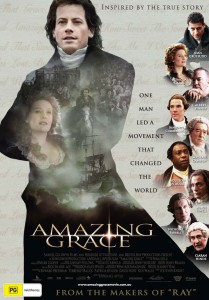Amazing Grace
a film directed by Michael Apted
First Published In The New York Review Of Books Volume 52, Number 10, June 14, 2007. Reproduced by kind permission of the author.
Two hundred years ago this spring, Britain ended its Atlantic slave trade, an event of immense importance, because the country then dominated the traffic in human beings. From the mid-1700s on, roughly half the captive Africans taken to the Americas had been transported in British ships. Ever since, Parliament’s vote to end the slave trade and then, a quarter-century later, to end British slavery itself have fascinated historians, because in both cases it seemed that a country acted contrary to its economic self-interest [ 1 ]. Some scholars recently calculated that these actions cost the British people roughly 1.8 percent of their national income over some six decades [ 2 ]. How can they be explained?
This is the question addressed by the new film Amazing Grace, directed by the talented Michael Apted, which opened recently to generally enthusiastic reviews. The scriptwriter, Steven Knight, is also the writer of Dirty Pretty Things, a memorably bold look at the gritty underside of immigrant life in today’s London. The cast of Amazing Grace includes some of the finest British actors, starting with Albert Finney. Most promising of all, recent decades have opened up some fresh ways of looking at British abolition.
For many years, almost all the credit for ending the slave trade was given to William Wilberforce, the eloquent, widely respected leader of the abolitionist forces in the House of Commons and a convert to the new evangelical strain of Anglicanism. In the nineteenth and early twentieth centuries, centering the story on Wilberforce satisfied many people. It allowed Britons to acknowledge that they had been involved in something horrendous, while at the same time giving Wilberforce credit for inspiring a great act of national benevolence. And for the Victorian age and after, Wilberforce made a good schoolbook hero. He was rich, philanthropically generous, and deeply religious; and in a raucous, hard-drinking, high-living era, he was faithful to his wife, with whom he had six children.
In 1933, England marked the centenary of Wilberforce’s death with parades, church services, wreath-layings, and memorial lectures; a ceremony in his home city of Hull included 20,000 spectators, Negro spirituals, a trumpet fanfare, the unfurling of the flags of fifty countries, and an aircraft fly-by. Several dozen biographies of Wilberforce have appeared over the years, most of them by evangelicals. Among their titles one finds God’s Politician, He Freed Britain’s Slaves, A Hero for Humanity, Statesman and Saint, and The Man Who Freed the Slaves.
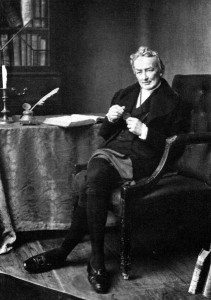
As with many myths, large parts of this one are true. Against powerful opposition, Wilberforce doggedly promoted the cause of abolition in Parliament for more than three decades. When the House of Commons passed its ban on the slave trade in 1807, it gave him a rare standing ovation, and he deserved it. From the accounts of his friends, he was a man of deep personal kindness and great charm: he sang magnificently and was a splendid mimic. He was famous for never having the heart to let an elderly servant go; one visitor counted thirteen of them tottering about the dining table, attending Wilberforce, his wife, and three guests. He gave away much of his money and lowered the rents of tenants on his land. And although deeply reactionary by modern standards—he felt that labor organizers deserved a prison sentence and that the poor should accept “that their more lowly path has been allotted to them by the hand of God”—his views were no worse than those of most of his fellow MPs. Otherwise, they wouldn’t have listened to him about slavery.
In recent decades, however, scholars have seen the history of British abolition as involving far more than Wilberforce’s personal virtue. In 1787–1788, during the heady period between the American and French Revolutions, a huge grassroots movement against the slave trade burst into life in Britain, startling abolitionists and slave traders alike. There was a solidarity across racial lines that often seems elusive in our own time. Some British radicals later began to point out similarities between the plight of slaves and British factory workers, some of whom marched under banners calling for ending slavery “both at home and abroad.” Antislavery fervor spread quickly in Ireland, where people felt they, too, knew something about oppression by the English. In 1792, more Britons signed petitions to Parliament against the slave trade than were eligible to vote. In the same year, more than 300,000 people refused to buy West Indian sugar. This was the largest consumer boycott the world had yet seen, and for tens of thousands of women—none of whom could vote—the occasion for their first political act. Without such pressure, Wilberforce could have done nothing in Parliament.
The movement was led by an extremely imaginative, hard-working committee of activists, most of them Quakers, who pioneered tactics that are still used by human rights groups today. The committee’s moving spirit and traveling organizer, Thomas Clarkson, was for much of his life a staunch radical who kept in his living room a stone he had proudly removed from the ruins of the Bastille a few weeks after its fall [ 3 ]. Clarkson, who estimated that he covered 35,000 miles by horseback in the movement’s first half-dozen years, finally got the full, scholarly biography he deserved in 1989 [ 4 ]. Historians also now give credit to the fiery Quaker pamphleteer Elizabeth Heyrick (1769–1831), who inspired the formation of some seventy women’s antislavery societies. Another important stimulus to popular feeling came from the eyewitness testimony of two former slaves living in Britain, Quobna Ottobah Cugoano and Olaudah Equiano, each of whom wrote books and traveled extensively throughout the country promoting them—Equiano for five years. Equiano’s autobiography, a best seller in its time, is now often assigned in American college courses [ 5 ].
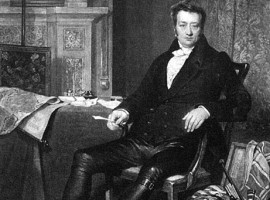
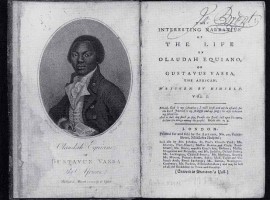
A further major force in the history of British abolition, widely recognized today, was the West Indian slave revolts, which erupted with particular intensity during the revolutionary decade of the 1790s. The Haitian Revolution of 1791–1803 was the largest slave uprising in history. Two years after its outbreak, Britain, at war with France, tried to seize this most populous and lucrative of all French colonies for itself. After five years of hard fighting against the rebels, British troops gave up. The British army fought slave rebellions elsewhere in the Caribbean as well during this period, and several officers came home from these campaigns to write and speak (and, in one case, publish caricature drawings) against slavery. By winning their freedom, the rebel slaves of Haiti undermined a major argument made by British slave-ship owners, which was that if Britain abandoned the slave trade, France would get all the business. A later revolt by 20,000 slaves in Jamaica in 1831 and 1832 was only barely contained by the British army, and this was a major cause of Parliament’s decision in 1833 to free the empire’s slaves.
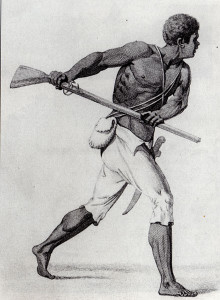
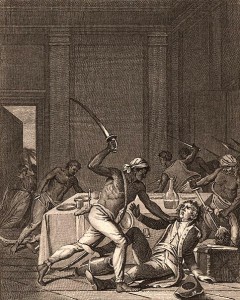
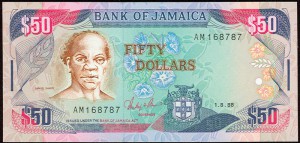
We might expect, then, that a film about British abolition released in 2007 would reflect some awareness of these broader historical currents that have recently been the subject of much attention. Amazing Grace is a visual treat. We see the familiar lush cinematography of Jane Austen– era England: grand country houses, mist-covered sheep meadows, formal gardens, frock coats for the men and plunging lace-trimmed necklines for the women, wood-paneled rooms with roaring fires. “It’s pretty much all true, certainly in spirit and essence,” Apted told The New York Times. “It had to be very accurate or else it would have lost its power.”[ 6 ] But here he is using, to say the least, a very Hollywood definition of accuracy. The wigs and stagecoaches may be authentic, but “in spirit and essence” the movie could have been made a hundred years ago. Its overall effect is to give the impression that William Wilberforce brought the slave trade to an end almost single-handedly [ 7 ].
In years past, biographers of Wilberforce have accomplished this aim by simply leaving out the other parts of the story. Amazing Grace does so with far more subtlety and sophistication. It gives short glimpses of the other important people and events—Clarkson’s travels, Equiano’s book tour, the sugar boycott, the mass petition campaigns—and it even makes a passing reference to the slave revolts. But (with the exception of the last) it implies quite falsely that Wilberforce orchestrated or supported them all.
Much of the movie unfolds as flashbacks. This allows the film’s Wilberforce, played appealingly by Ioan Gruffudd, to recount the beginnings of the antislavery movement to the young woman he is falling in love with, Barbara Spooner (Romola Garai). And so we see Thomas Clarkson (Rufus Sewell) galloping down a picturesque country lane, and we see Olaudah Equiano (the Senegalese singer Youssou N’Dour) selling copies of his book to eager buyers. Clarkson is also shown, oddly, somewhat drunk. But we are hearing Wilberforce’s voice describing their work to his beloved, as if it were he who had approvingly dispatched them on their missions. At one point, when the antislavery movement revives after a hiatus, it is Wilberforce who personally comes to fetch Clarkson, saying, “We need you back in London straight away.”
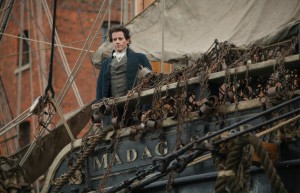
In fact, the very sober Clarkson set off on the first of his organizing trips some two years before Wilberforce said a word against the slave trade in Parliament. Thirty-seven years later, in his sixties, Clarkson finished his last, thirteen-month trip around the country by stagecoach. And always on these journeys he was reporting to the largely Quaker abolition committee, not to Wilberforce. Early on, Clarkson bought some slave shackles at a ship chandler’s on the Liverpool docks and displayed them to shocked audiences on his travels; in the film it is Wilberforce who does this. And far from Wilberforce being a friend of Equiano (in the film the two have dinner and tour a slave ship together), there is no evidence that they ever met. Nor, so far as we know, did Wilberforce ever read Equiano’s book [ 8 ]; in his view, the proper role for freed slaves was to act as “a grateful peasantry.”

In yet another misleading episode, Wilberforce, talking to his future wife, appreciatively mentions the sugar boycott and her taking part in it. In real life, however, deeply uneasy with any uncontrolled expression of popular will, he opposed the boycott. He also felt strongly that women should obey their husbands and should have nothing to do with politics or the antislavery movement [ 9 ]. In a similar distortion of reality, the film’s Wilberforce dramatically unrolls a huge petition against the slave trade on the floor of the House of Commons and declaims to a pro-slavery MP, “No matter how much you shout, you will not drown out the voice of the people!” The real Wilberforce cared about many things, but the voice of the people was not one of them: he did not support any of the various reform proposals that would have increased the less than 5 percent of the population then eligible to vote. For him, government was strictly a matter for a small elite of well-born, well-educated men like himself. The Wilberforce of Apted’s film does something else that would have shocked the real one: he includes ex-slaves and a woman—Equiano, other black men, and the evangelical writer Hannah More—in a planning session about parliamentary strategy. This curious movie seeks to lionize Wilberforce by portraying him as something he decidedly was not: a modern liberal.
But not too liberal. Just to be sure we don’t get any foolish ideas that the antislavery movement was an integral part of the age of revolutions, the film shows us a wise Wilberforce cautioning a hot-headed Clarkson about to head off to revolutionary France. Sounding like a proto-Leninist, Clarkson says, “We must fight! For a perfect order!”
Another character in the film is distorted in a different way. After Wilberforce’s religious conversion, when he was trying to decide whether to remain in Parliament, he went in 1785 to consult John Newton, the leading evangelical clergyman. The writer of the hymn “Amazing Grace,” Newton had been a slave-ship captain in his youth. In the traditional telling of the story, it is often implied that the hymn was some kind of atonement for his past. Hollywood loves nothing better than repentant sinners, and so in the publicity material sent to film critics, the makers of Amazing Grace say:
“Newton was captain of a slave ship for many years, until he underwent a dramatic religious conversion while steering his vessel through a storm. Repenting and regretting the misery he had inflicted on the thousands of human cargo he had transported across the Middle Passage…, he devoted his life to the Church.”
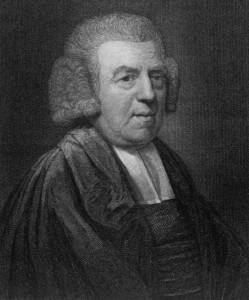
When the film shows Wilberforce coming to visit Newton, the minister is the very picture of repentance: he wears a monk’s rough cloth robe, and, barefoot, is cleaning the floor of his church. Wilberforce says, “You told me that you live in the company of twenty thousand ghosts—the ghosts of slaves.” Albert Finney plays Newton with a trembling passion worthy of a best supporting actor nomination, telling Wilberforce to fight the slave traders: “Do it, Wilber!” he says, “Take them on! Pull their dirty filthy ships out of the water! The planters, sugar barons…do it! For God’s sake!”
The reality was quite different. Most inconveniently for sin-and-repentance storytellers, John Newton came to evangelical Christianity before making four transatlantic voyages as a slave-ship officer, not afterward. He left the trade not for reasons of conscience but of health. And when he later was ordained a minister, he had all his savings invested with his former employer, who still had a fleet of slave ships at sea. There is no evidence that he mentioned slavery when Wilberforce first came to see him. Newton said not a word in public against the slave trade until 1788, several years after meeting Wilberforce and more than thirty years after he left the sea; by then a huge mass movement was underway and it was no longer easy for so prominent a former slave trader to avoid taking a stand. He then wrote a forceful pamphlet against the trade, testified twice at hearings, mentioned the subject once or twice in sermons, and otherwise did not openly raise it again for the remaining two decades of his preaching and writing life. He believed that the major evil of the day was blasphemy, which he once called “Our national sin.”
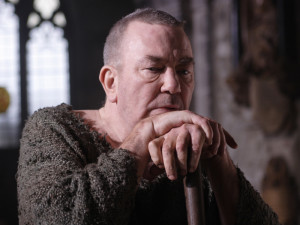
Amazing Grace is only one of many ways in which Britain is marking the abolition bicentenary. Commemorative events have been staged by every institution from the House of Lords to the Socialist Workers Party. Tony Blair has expressed his “deep sorrow” for the slave trade. Ken Livingstone, mayor of London and perennial critic of Blair’s New Labour politics, has said, “The British government must formally apologize…. All attempts to evade this are weasel words.” A special £2 coin commemorates the end of the slave trade and a new set of stamps honors both black and white abolitionists. Queen Elizabeth II has attended a special memorial service in Westminster Abbey. A group of Wilberforce admirers have marched in yokes and chains from Hull to London.
Virtually every major museum in the country is mounting exhibitions: on the slave trade’s influence on art and design at the Victoria and Albert; on abolitionists and slave merchants at the National Portrait Gallery; on slave-grown commodities at the British Museum; and on Equiano at the Birmingham Museum. The archbishops of Canterbury and York have posted a video on YouTube about their visit to a slave prison in Zanzibar. British government officials have toured other slave sites in Africa. More than £20 million in funds from the national lottery have gone to bicentenary projects in local communities.
By contrast, in 1907, not a single event commemorating the centenary made it into the London Times index for that year. But of course it is a different Britain today: more than 11 percent of the population of London, for example, is of African or West Indian descent. Traditionally, black Britons have voted Labour; and, of course, the government is eager for anything to take people’s minds off its participation in the disastrous American venture in Iraq. Still, the immense public attention given to abolition this year can’t be seen as mere political expediency. More and more Britons are aware that they are living in an increasingly multiracial society, with a troubled black urban underclass, in a country whose full history involves far more than the familiar stories of kings and queens and battle victories and the extension of the franchise. Furthermore, some of the commemorative events are being staged by members of the black community itself.
On a cold March afternoon, for instance, a small but moving ceremony took place to dedicate a two-hundredth-anniversary plaque in a park in Ealing, a London borough where many Caribbean immigrants and their descendants live. A borough councilor made a short speech, and some of the participants planted a tree (symbolically, a variety of palm that does well in northern climates) and lit a candle; a minister poured a vial of salt water over the new plaque, for the tears that had been shed by those in slavery. Four children from the local high school, two black, two white, read from William Cowper’s “The Negro’s Complaint,” the most widely sung antislavery ballad of the 1780s. Its opening lines, “Forc’d from home and all its pleasures…O’er the raging billows borne,” may have evoked for the older West Indian immigrants present their own journey across the ocean to a new and often difficult life in England. At the end, everyone scattered flowers in memory of those who died as slaves. Unexpectedly, four municipal park workers in green safety vests, who had been standing nonchalantly off to the side in the manner of gravediggers at a funeral, came forward to scatter flowers as well.
In Britain’s black press, there have been occasional grumblings about this year’s events as a “Wilberfest”; a critic in the Guardian attacked a recent radio broadcast praising Wilberforce as “nursery-book history.” But for the most part, people are hearing a more genuine story this year. Many of the more than two dozen special BBC programs having to do with slavery and abolition that were broadcast in the anniversary month of March—documentary, drama, and hybrid—touched on subjects such as slave revolts, modern-day racism, and whether reparations should be paid. In late April the British Empire and Commonwealth Museum in Bristol opened a large exhibition which confronts such uncomfortable topics as the fact that emancipation brought little immediate improvement in the daily lives of former British slaves. Liverpool, the country’s largest slave port, will open a new £10 million International Slavery Museum on August 23—the anniversary of the great Haitian uprising. Anyone today in Britain who turns for information about slavery to a museum, a bookstore, or radio and TV will quickly find a far richer and more informed version of this history than was readily available a generation ago.
Why, then, does Amazing Grace revert to telling the story in such a determinedly conservative and old-fashioned way? The filmmaker’s job is to entertain us, of course, not to stick to the letter of history or to reflect the latest scholarship. But is there something else going on?
One answer lies with the movie’s principal financier, Philip Anschutz, an American businessman who has long sought to fund a film about Wilberforce and who had been turned down by various directors in the past. Anschutz is a major backer of the Christian right, a tycoon with a vast empire of holdings in real estate, cattle, oil, newspapers, railroads, and sports teams, including the Los Angeles Lakers. In 2002, Fortune named him the country’s “greediest executive” for selling more than $1.5 billion in shares of Qwest Communications, of which he had been chairman, before the company announced it had inflated its revenues and its stock price collapsed [ 10 ]. Anschutz has been a major financial backer of George W. Bush, and of groups opposing everything from gay rights to abortion to the teaching of evolution.
Anschutz has also been trying to get a license to open a large gambling casino in London. British journalists have alleged that is one of the reasons he recently invited Britain’s Deputy Prime Minister John Prescott to his lavish 35,000-acre Colorado ranch. Prescott denies the accusation, and says that he and Anschutz were merely talking about their mutual admiration of Wilberforce. Wilberforce, incidentally, thought gambling almost as sinful as slavery.
Anschutz has not given a press interview since 1974, but it’s not hard to guess why he was so eager to make this film. Many American politicians of the Christian right have adopted Wilberforce as a model of virtue. Republican Congressman Mike Pence of Indiana, runner-up for minority leader in the new House, says Wilberforce is one of his personal heroes. Congressman Frank Wolf, a Virginian Republican, says, “If we can get the word out about Wilberforce’s life and legacy, we can change this country.” Senator Sam Brownback of Kansas, a Republican presidential contender, talks about the man so much that The Economist recently dubbed him and others “Wilberforce Republicans.” Their agenda is much the same as that of others on the far right, with a few twists, such as an interest in prison reform (Wilberforce himself used to visit prisoners and ask them to repent). Many Wilberforce Republicans claim that if he were alive today, their hero would be leading the fight against abortion [ 11 ]See, for example, Russ Pulliam, “Abortion Foes Look Up to Anti-Slavery Hero,” The Indianapolis Star, February 20, 2005.[/ref.]
Even the unsavory political consultant Dick Morris portrays himself as a Wilberforce admirer. When asked on Fox News recently about the uproar over racist remarks by talk-show host Don Imus, Morris said, “It reminds me of William Wilberforce…. His whole crusade was a reformation of manners. No cock fighting. No dog fighting. No bull baiting. No abusing of horses…. And of course no slavery.” (Morris did not mention various other things Wilberforce opposed, which ranged from the theater to public bathing in the Thames to “the progressive rise of Wages.”)
Most important for his present-day political admirers is to celebrate Wilberforce as someone whose Christian fundamentalist convictions were central to his politics. In its heavy-handed way, Amazing Grace makes sure that we get this message. We see Wilberforce having his ecstatic moment of evangelical conversion in a field. “You found God, sir?” a servant asks him. Wilberforce replies, “I think he found me.” Later, over a dinner table, Clarkson says to him, “Mr. Wilberforce, we understand you’re having problems choosing whether to do the work of God or the work of a political activist.” Hannah More quickly adds, “We humbly suggest that you can do both.”
This, then, is the message the film wants us to carry away: that God’s work is best done by a wealthy, virtuous man like Wilberforce, who is against slavery but still comfortable with a world of haves and have-nots. But just what is the work of God? Is it a matter of opposing slavery? Or of opposing gambling, abortion, and women’s rights as well as slavery? Or is it a matter of fighting to narrow the gap between rich and poor? President Bush, who recently had a special screening of Amazing Grace at the White House, has several times suggested that God told him to invade Afghanistan and Iraq. A century ago, President William McKinley said that “God Almighty” told him to annex the Philippines. The problem is that people hear God say very different things, and many of them have to do with advancing strategic and economic interests on earth. All of which speaks for great wariness when politicians claim to be doing God’s work.
Did Philip Anschutz closely control the way Wilberforce’s story was presented in this film? Perhaps he didn’t have to. Intended to reach large commercial audiences, his Christian film projects have a softer focus than his political donations. In this case, there was no need for overkill. If you want to downplay the slave rebellions and a sometimes unruly mass movement, and emphasize the politics of pious, from-the-top-down benevolence, it is enough to tell the story of this important moment in time entirely through the character of Wilberforce. But in a year that offers the occasion for a deeper and richer look at British slavery and abolition, it is a pity that artists of the caliber of Michael Apted and Steven Knight lent their talents to a tamely traditional and misleading film. And when Apted claims its slippery distortions are “accurate” he is in fact presenting no more than a Sunday-school version of one of history’s great social movements.
- [ 1 ] In 1944, Eric Williams published his Capitalism and Slavery, which argued, among other things, that abolishing the trade and, later, slavery was in Britain’s self-interest. The originality and economic sophistication of Williams’s book greatly raised the standard of scholarship in the field, and for several decades became the academic orthodoxy. But his contention about abolition’s profitability has been effectively demolished, particularly by Seymour Dresher in his Econocide: British Slavery in the Era of Abolition (University of Pittsburgh Press, 1977). Few historians today still agree with Williams on this point. See, for instance, David Brion Davis, Inhuman Bondage: The Rise and Fall of Slavery in the New World (Oxford University Press, 2006), pp. 231–249. [back…]
- [ 2 ] Chaim D. Kaufmann and Robert A. Pape, “Explaining Costly International Moral Action: Britain’s Sixty-Year Campaign Against the Atlantic Slave Trade,” International Organization, Vol. 53, No. 4 (Autumn 1999), p. 637. [back…]
- [ 3 ] Wilberforce was deeply uncomfortable with Clarkson’s enthusiasm for the French Revolution, and, fearing that such radicalism would taint the abolition movement, pressed him to restrain his public support for it. To some extent Clarkson did so, but two researchers, Andrew Coates and David Jones, have recently unearthed a long series of unsigned articles about French events and the Haitian Revolution which Clarkson quietly sent to the provincial newspaper in Ipswich, Suffolk. [back…]
- [ 4 ] Ellen Gibson Wilson’s excellent Thomas Clarkson: A Biography (Macmillan, 1989). [back…]
- [ 5 ] The Interesting Narrative and Other Writings (Penguin, 2003), edited by Vincent Carretta, is the best-annotated edition. Carretta is also the author of the definitive Equiano the African: Biography of a Self-Made Man (University of Georgia Press, 2005). [back…]
- [ 6 ] Alan Riding, “Britain’s Slave Empire, As the Sun Set,” February 18, 2007. [back…]
- [ 7 ] Eric Metaxis, William Wilberforce and the Heroic Campaign to End Slavery (HarperCollins, 2007), published as the official companion biography to the movie, calls Wilberforce “simply the greatest social reformer in the history of the world.” On the whole, however, the book is far more responsible than the film. Metaxis makes clear that his focus on Wilberforce leaves other parts of the story untold, and generously acknowledges the two best scholarly biographies of Wilberforce, those by John Pollock (Wilberforce; St. Martin’s, 1978) and Robin Furneaux (William Wilberforce; London: Hamilton, 1974). [back…]
- [ 8 ] In the fashion of the day, each of the many editions Equiano published during his lifetime is prefaced with a long list of “subscribers” who ordered a copy in advance as a means of showing their support. Many other prominent abolitionists are listed among more than a thousand subscribers, some buying several copies; at least one—John Wesley, the founder of Methodism —wrote to Wilberforce about the book. But Wilberforce apparently never bought a copy. [back…]
- [ 9 ] “For ladies to meet, to publish, to go from house to house stirring up petitions,” Wilberforce wrote to his friend Thomas Babington on January 31, 1826, “—these appear to me proceedings unsuited to the female character as delineated in Scripture.” [back…]
- [ 10 ] See Mark Gimein, “You Bought. They Sold,” Fortune, September 2, 2002. [back…]
- [ 11 ] [back…]
